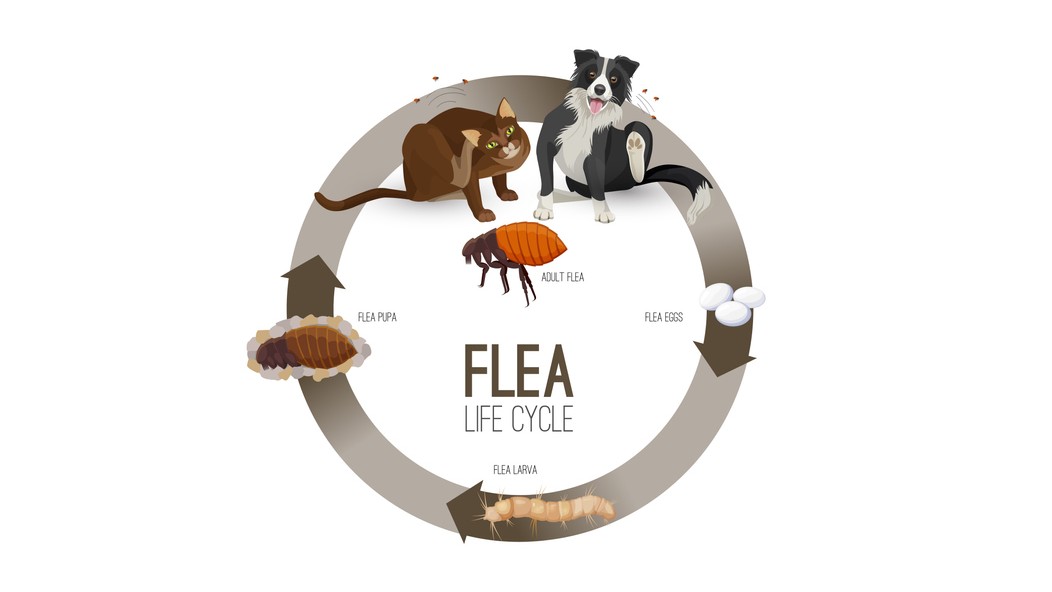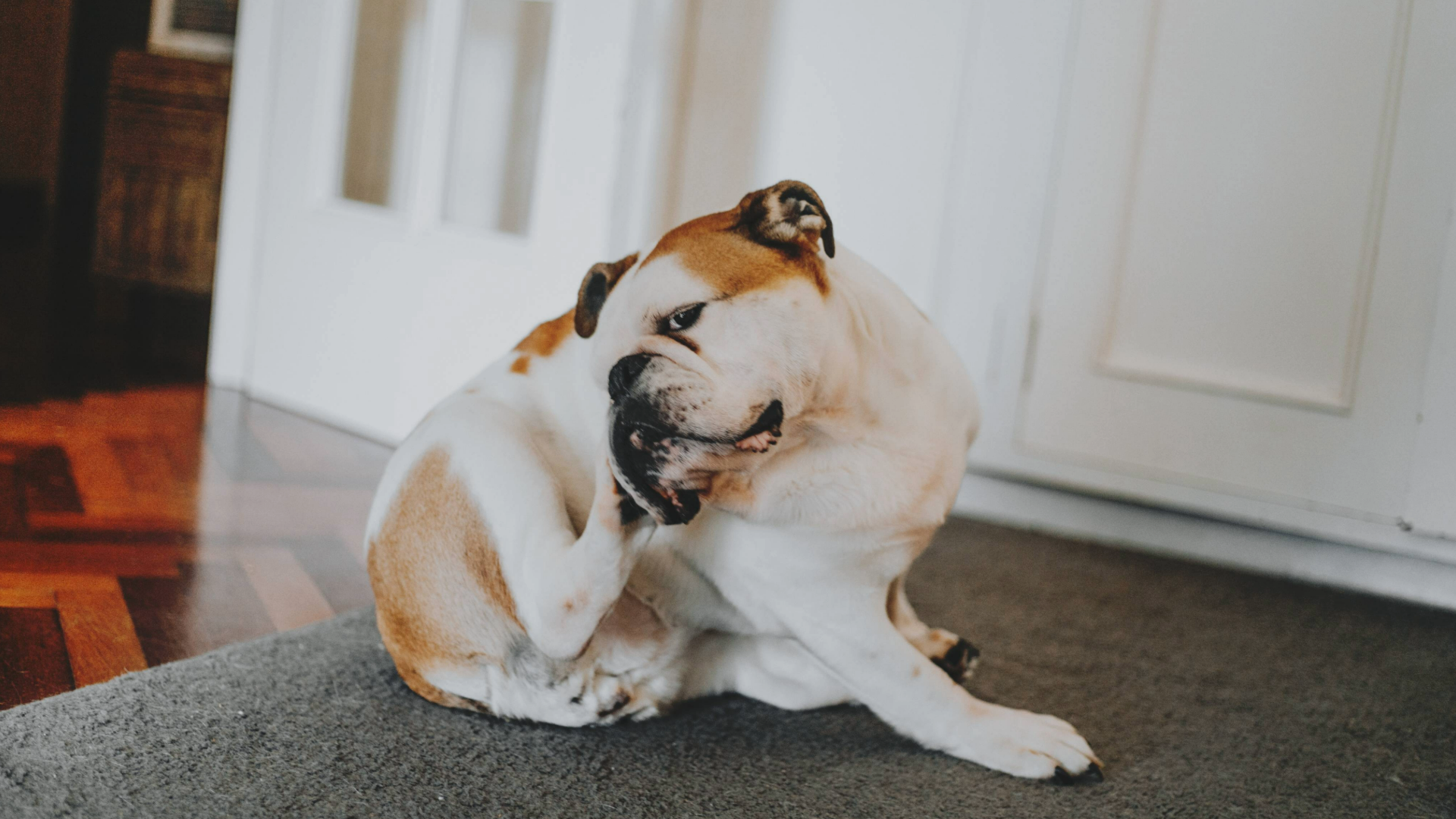Flea treatment not working? 5 mistakes you might be making, according to a vet
A vet explains why your flea treatment isn’t working – and whether it’s safe to reapply

Is your flea treatment not working? Have you tried everything, but those pesky parasites just won’t seem to leave? If the answer is yes, then you’re in the right place, because we’ve consulted expert vet Dr. Joanna Woodnutt for her advice on banishing fleas for good.
This is a problem that lots of pet parents face – yes, even after applying the best flea treatment for cats or the best flea treatment for dogs. These little critters aren’t just annoyingly itchy, but they can also cause health issues like anemia and Lyme disease, so it’s super important to get rid of them. They can also spread to your furniture and carpets.
Below, Dr. Woodnutt has revealed five common mistakes that could be causing fleas to stick around, and how the flea cycle works. She’s also explained whether it’s safe to reapply the treatment and what to do when it’s just not working.
Why is my flea treatment not working?
Here are the most common mistakes made when using a flea treatment:
1. Using flea shampoo
One really common scenario is a frustrated pet parent who uses flea shampoo, then applies, for example, the best topical flea treatment for cats, to kill the fleas. Many of the spot-on flea products use the natural oils of the coat to spread the flea treatment over your pet.
So, if you’ve just washed your pet and stripped the natural oils, they’ll be less effective. Check the packaging for specific recommendations, but most say you cannot apply within 48 hours of a bath, and you shouldn’t bathe your dog for at least 48 hours after application, either.
Even after the medication has dried, repeated washing during treatment with spot-ons will reduce effectiveness. There is no need to use a flea shampoo, just stick to effective veterinary recommended flea products.
Get the best advice, tips and top tech for your beloved Pets
Frontline Plus Flea & Tick Treatment for Cats | Amazon
This popular spot-on treatment kills fleas within 24 hours and ticks within 48 hours, and is easily applied with a pipette.
2. Not treating all your pets
There’s no point in treating your dogs if the adult fleas can feed on your rabbit, or on the neighbour’s cat that sleeps on your sofa sometimes!
The minute you forget a day of your dog’s treatment or use a sub-standard product, they’ll catch fleas again. Make sure you treat all the animals in the house so the adult fleas have nowhere safe to go. If you have a visiting cat, please check with their owner before applying flea treatment, to avoid accidental double-dosing.
If you aren’t sure who the owner is, a cat-safe paper collar is a good way to send a message home asking someone to call you.
3. Not waiting long enough
We’ve hit on this a couple of times already, but just to reiterate – in my experience, the single most common reason for flea treatment failure is not understanding just how long it takes to get rid of an infestation.
Pet parents often have unrealistic expectations, especially if they buy a product from the vets – but the truth is, the pupae can wait 12 weeks to hatch, which means you need to treat for 12 weeks, without a gap, to beat them.
To avoid this situation from occurring in the first place, use preventive flea products regularly to give your pet (and home!) protection against infestations.

4. Using bad, out-of-date, or fake products
Sometimes things are too good to be true. If the flea treatment seems a lot cheaper than you’re used to, ask yourself why. Could the product be out of date? Did it come from a reputable source? Does it actually claim to kill fleas, or does it just repel them? If you’ve used a sub-standard product, it stands to reason the result might not be what you want. There are also fakes circulating, so you might have done your best but still been caught out.
Whilst an adulticide treatment appears to be cheaper than one that treats more life stages, remember that you’ll need to treat for twice as long to get rid of a flea infestation! We have buying guides to all types of effective flea treatment including the best flea collars for dogs and the best flea collars for cats, along with the best flea medication for dogs and
5. Not treating the house
If your product only contains an adulticide, you still need to kill the eggs and larvae in the house. One way of doing this is with a house spray or flea bomb. Many of these products last for several months in the environment, so only need to be applied a couple of times a year. It’s easy to forget this step, but using flea spray takes the time to treat the infestation from six months to three months!
Advantage Household Fogger | Amazon
This powerful home treatment reaches pests hidden in places you can't see. It kills adult fleas and their eggs, and ticks on carpets, rugs, drapes and more for comprehensive pest control that eliminates pests for seven months.
Vet's Best Flea and Tick Home Spray | Amazon
This natural flea spray is safe for pups 12 weeks and older. It’s designed to be used in and around your home and will not leave stains.
Can I reapply flea treatment if it doesn’t work?
If you’ve applied flea treatment but can still see live fleas on your pet, you should resist the urge to re-apply the flea treatment. Doubling up on dosing can be dangerous for your pet, and unnecessary, if you are using already using an effective flea product. If you remember the flea life cycle, you will still be having pupae hatching in the environment with the adult fleas hopping onto your pet for a few months.
The good news is that after encountering your pet and their flea product these fleas should shortly die without reproducing. Sometimes the fleas may be hyperexcitable before they keel over and die, which could be what you are seeing. However, if you are still seeing high numbers of fleas or if you have concerns about the quality of your flea product then call your veterinarian for advice.
There will likely be a waiting period (of a few days or weeks) before you can apply another flea treatment, depending on what you’ve already used. However, in some cases, new and more effective flea treatment can be safely prescribed, but your vet will advise further.

Why is my dog or cat still scratching after flea treatment?
Of course, there are other reasons why your pet might be needing to itch. If you’ve treated them with a good product for at least 12 weeks without a gap, and have seen no sign of fleas, it’s possible fleas weren’t the main problem. There are other common causes of itchiness in pets, including allergies, skin infections, other parasites, and even anxiety. If your pet is still scratching after flea treatment, call your vet for help.
What to do when flea treatment not working
It’s time to go and see your vet. Don’t be embarrassed – your local vet deals with fleas all the time and it is no reflection on your home or ability to care for your pet.
Your vet will be able to work out what’s gone wrong and help you to get rid of the fleas. If your pet has seen the vet within the last six to 12 months, they may even not need to be seen and may instead prescribe some treatment over the phone and give you up-to-date advice. If your pet does need to be seen, a ‘flea check’ is often free!
What is the flea lifecycle and why does it matter?

Fleas are one of the most common parasites that vets see in practice, in particular Ctenocephalides felis (the cat flea). This insect can infect cats, dogs and rabbits as well as biting humans too, causing itchiness but also transmitting disease.
The flea life cycle is the term used to describe the stages that fleas go through to develop from eggs to mature adults. It’s important to understand this in order to tackle your parasite problem effectively.
Adult fleas live mostly on your pet, although they may jump back off and spend some time in your house too. They lay tiny white eggs on your pet, which fall off into the carpet, but they may also lay eggs between the floorboards, in cracks in the tiles, and under the sofa – anywhere dark and hidden. These eggs hatch into little caterpillar-like larvae, which feed on dust, debris, and poo from the adults.
Once they’ve grown large enough, the larvae pupate, spinning a camouflaged cocoon from carpet fibres and dust. In the pupa, they transform from this caterpillar-like legless larva into an adult flea with long legs for jumping and an appetite for animal blood. They may then hatch or – if they sense conditions aren’t right – they could wait in the cocoon, protected, for several months if necessary. None of the flea products on the market can kill flea pupae.
There are three important things to note here:
- Fleas go through four life stages
- Only a very small proportion of the infestation is the adult fleas on your pet
- None of the flea-killing products can get through the cocoon and kill the pupa
What does this mean for treating fleas on my pet?
Understanding the flea lifecycle is key to treating this parasite effectively. Firstly, it’s important to understand that most flea products contain an adulticide – a chemical to kill the adults. Some – but not all – will also contain ingredients that will kill the eggs/larvae. This is usually an insect growth regulator, which prevents the immature fleas from developing and moving through the life cycle.
If you only kill the adults, you will need to treat the infestation long enough for all the eggs to hatch into larvae, all the larvae to pupate, and all the pupae to hatch into mature fleas– that could take five to six months! So, finding a product that targets adults as well as the immature stages of the flea is crucial.

Secondly, it’s important to remember that the cocoon stage is immune to all known insecticides… and it can survive in that stage for 12 weeks or more if conditions aren’t right for hatching.
Even if you kill the adults, the eggs, and the larvae, nothing will kill the pupae in their cocoons. So you need to treat your pet for long enough for all the existing pupae in your house to hatch into adults so the adulticide can kill them – that can still take at least three months!
If you accidentally break your pet’s treatment program at any point during this time, the pupae can hatch, feed, and start laying eggs again. This will undo all your good work and start your infestation again, setting your time-to-clear clock back to zero.
So now you know the biggest mistakes made when people think their flea treatment is not working, hopefully you can avoid making these mistakes yourself. You’ll also know the importance of treating your pet for several months without a break in order to ensure the infestation has gone.
You might also want to read about the safest flea treatments for dogs and how do cats get fleas?

After graduating as a vet from the University of Nottingham, Dr. Joanna Woodnutt went on to practice companion animal medicine in the Midlands. She quickly developed a love of consulting and helping clients with medical problems such as dermatology, behavior and nutrition - anything that involved helping clients understand their pets better.
Edited by Alexis de Leaver and Georgia Guerin.
This feature was last updated on February 4, 2025.
After graduating as a vet from the University of Nottingham in 2016, Dr. Joanna Woodnutt went on to practice companion animal medicine in the Midlands. She quickly developed a love of consulting and helping clients with medical problems such as dermatology, behavior and nutrition - anything that involved helping clients understand their pets better.
Jo started writing about pet health in 2017, realizing that it meant she could help even more pet parents. Since then, she has written for countless online and print publications and is a regular contributor for Edition Dog Magazine. Jo is the director of The Veterinary Content Company, which she founded in 2020. She is also the founder of Petlearnia, a platform that provides pet e-learning courses for pet parents.
Jo now lives in the Channel Islands with her husband Ian and terrier Pixie.
- Megan MilsteadStaff Writer



